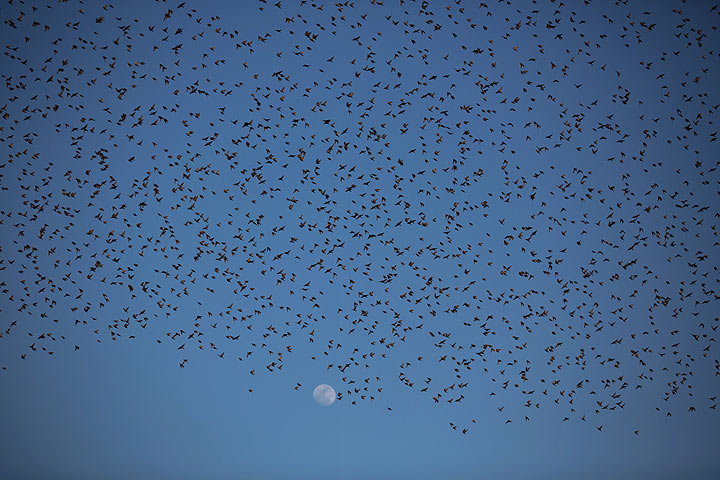TORONTO – The bodies of over 1,700 birds are on display in Toronto’s Royal Ontario Museum (ROM) on Monday.

More than 90 species of birds, including federally protected species at risk, are included in the display. All of the birds exhibited in the ROM’s Rotunda died while trying to navigate Toronto’s skies last year.
Every year millions of migrating birds are killed from crashing into buildings in North America, according to non-profit organization Fatal Light Awareness Program (FLAP) Canada.
FLAP estimates that every year one million birds die in Toronto from colliding with buildings during the spring and fall migration seasons.
An Environment Canada study released in 2013 showed that approximately 270 million birds die every year in Canada. Of that 270 million, 95 per cent of the deaths were caused by indirect human factors, such as cat predation and collisions with buildings.
The report authors said some sources of human-related bird deaths – especially those affecting only a few birds at a time, like bird-building collisions – are often overlooked because at the local level, the numbers don’t seem that big.
But when looked at on a national scale, the number of bird deaths begin to add up.
“Some sources of human-related avian mortality are well-quantified, such as the regulated sport harvest of game birds, but the magnitudes of most sources are imprecise or unknown,” read the report.
“In particular, those affecting a few birds at a time, e.g., cat predation or building collisions, may often be overlooked because their local effects are rarely extrapolated nationally.”
FLAP Canada’s executive director, Michael Mesure, said bird-building collision deaths are easily preventable.
“There are cost-effective, commercially available aesthetic solutions that help alert birds to the presence of windows,” said Mesure.
There are many reasons why migratory birds collide with urban buildings. In the daytime, the glass on a building is invisible to birds. They may see the reflection of the landscape in mirrored glass or see plants inside the building through the glass.
According to FLAP Canada, any reflective surface (from the windows of your homes, to bus shelters, to the mirrored exterior of condo and office towers) can be fatal to birds.
During the night, birds are drawn to light omitted from buildings and get “trapped in the maze of buildings that obstruct their instinctive migration route,” said FLAP Canada.
“There is no season or time of day, and almost no weather conditions during which birds elude glass,” said Dr. Daniel Klem Jr., an ornithology and conservation biology professor at Muhlenberg College.
Klem Jr. said bird collisions happen in various settings, at differing building heights, glass surface types – meaning there is no one-size fits all solution to reducing bird collisions – however birds are most vulnerable to large panes of windows at heights above three metres.
You can learn more about the technical specifications of both commercial and residential strategies here.


Comments